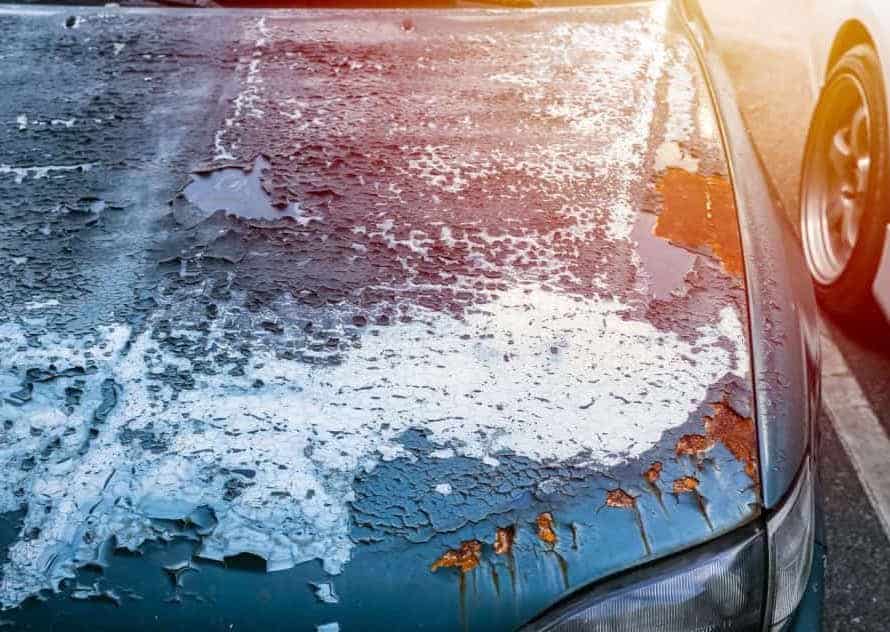Protecting Car Paint from Damage: Tips and Tricks for a Stunning Finish
Your car’s paint doesn’t just serve an aesthetic purpose; it also plays a crucial role in protecting the underlying metal from rust and corrosion. With constant exposure to elements like sunlight, rain, dirt, and road debris, your car’s paint is susceptible to damage over time. However, with proper care and attention, you can maintain a glossy and pristine finish that enhances both the appearance and longevity of your vehicle. In this blog, we’ll delve into a range of strategies and techniques to help you in protecting car paint from damage.

Regular Washing and Cleaning
Regular cleaning is the foundation of protecting car paint from damage. Dirt, dust, and road grime can accumulate on the surface of your vehicle, leading to micro-scratches and a dull appearance. To prevent this, follow these steps:
- Use a pH-balanced car shampoo and a microfiber wash mitt to gently remove dirt without causing scratches.
- Rinse your car thoroughly before washing it to remove any loose particles that could scratch the paint.
- Avoid using abrasive sponges or brushes, as they can damage the paint.
- Dry your car using a clean microfiber towel or a drying aid to prevent water spots.
- Apply a Quality Wax or Sealant
- Applying a layer of wax or sealant provides a protective barrier against environmental contaminants and UV rays.
Choose a high-quality wax or synthetic sealant and follow these guidelines:
- Apply wax or sealant in a shaded area on a clean surface.
- Use an applicator pad or a soft cloth to evenly spread the product.
- Allow the product to haze over before buffing it off with a clean microfiber towel.
Invest in Paint Protection Film (PPF)
Paint Protection Film, also known as clear bra, is a transparent film that can be applied to vulnerable areas of your car’s exterior, such as the front bumper, hood, and side mirrors. PPF offers a physical barrier against rock chips, road debris, and minor scratches, helping to protecting car paint from damage.
Avoid Parking in Direct Sunlight
Prolonged exposure to sunlight can lead to paint fading and oxidation. Whenever possible, park your car in a shaded area or use a car cover to shield it from the sun’s harmful rays. If you’re unable to find shade, consider using a windshield sunshade to protect the interior and minimize heat buildup.
Mindful Driving Practices
Your driving habits can also impact the condition of your car’s paint. Follow these guidelines to minimize paint damage:
- Maintain a safe following distance to avoid rocks and debris kicked up by other vehicles.
- Avoid tailgating large trucks, as they can kick up rocks that may chip your paint.
- Steer clear of abrasive car washes with stiff brushes that can scratch the paint.
Regular Maintenance
Routine maintenance goes a long way in preserving your car’s appearance. Inspect your vehicle regularly for any signs of damage, chips, or scratches. Addressing these issues promptly can prevent them from worsening and causing additional damage.
Use Quality Microfiber Towels and Applicators
When cleaning, drying, or applying products to your car’s paint, opt for high-quality microfiber towels and applicators. Cheap or low-quality materials can scratch the paint surface, defeating the purpose of your efforts to protect it.
FAQs – Protecting Car Paint from Damage
Why is protecting car paint important?
Maintaining your car’s paint not only enhances its appearance but also prevents rust and corrosion, preserving the underlying metal. A well-maintained paint job increases your car’s resale value and prolongs its overall lifespan.
How often should I wash my car?
Washing your car every two weeks is a good rule of thumb, but the frequency can vary depending on your driving conditions. If you frequently drive in dusty or polluted areas, more frequent washing might be necessary.
What type of soap should I use to wash my car?
Opt for a pH-balanced car shampoo specifically designed for automotive use. Avoid using household detergents or soaps, as they can strip off wax and damage the paint.
Can I use any cloth to dry my car after washing?
No, it’s recommended to use a clean, soft microfiber towel or a drying aid to prevent scratching the paint. Avoid using regular towels or abrasive materials that can cause damage.
How often should I apply wax or sealant?
It’s generally recommended to apply wax every 2-3 months, or as needed based on how the water beads on the paint surface. Sealants can last longer, often up to 6 months or more, providing durable protection.
What is Paint Protection Film (PPF)?
Paint Protection Film is a clear, durable, self-healing film applied to vulnerable areas of your car’s exterior to shield against rock chips, scratches, and other minor damage. It provides an extra layer of protection without affecting the paint’s appearance.
Read more: The Case For Prioritising Car Covers As Your Initial Auto Accessory
Can I apply wax or sealant in direct sunlight?
It’s best to apply wax or sealant in a shaded area to avoid premature drying, which can lead to uneven application. Direct sunlight can make the product hard to work with and might result in streaks.
Does parking in a garage help protect my car’s paint?
Yes, parking in a garage or shaded area helps shield your car from direct sunlight, harsh weather, and airborne contaminants, reducing the risk of paint damage and fading.
How can I avoid rock chips and road debris damage?
Maintain a safe following distance from other vehicles, especially large trucks, to avoid debris kicked up by their tires. Consider using Paint Protection Film on vulnerable areas like the front end to prevent rock chips.
Are touchless car washes better for paint protection?
Yes, touchless car washes are generally gentler on your car’s paint compared to those with brushes. However, be cautious with automated car washes that use harsh chemicals, as they might degrade wax and sealants.
Can I fix paint chips and scratches myself?
Minor paint chips and scratches can often be fixed using touch-up paint kits available from your car’s manufacturer. For more extensive damage, it’s recommended to seek professional assistance.
Read more: The Importance Of Quality Car Paint: A Deep Dive Into Automotive Aesthetics And Protection
What’s the best way to remove bird droppings and tree sap from my car’s paint?
Remove bird droppings and tree sap as soon as possible using a gentle automotive detailer or a mixture of water and car shampoo. Let it soak for a few minutes before gently wiping it away with a microfiber cloth.
Conclusion
Your car’s paint is a valuable asset that deserves proper care and attention. By following these tips and implementing a regular maintenance routine, you can keep your car looking as good as new for years to come. From regular washing and waxing to investing in protective films and practising mindful driving, these strategies will help you safeguard your car’s paint from damage and maintain its stunning finish.
Remember, consistent care and attention to your car’s paint will yield long-lasting results and keep your vehicle looking pristine. If you have specific concerns about your car’s paint or need professional advice, don’t hesitate to consult with a trusted automotive expert.

